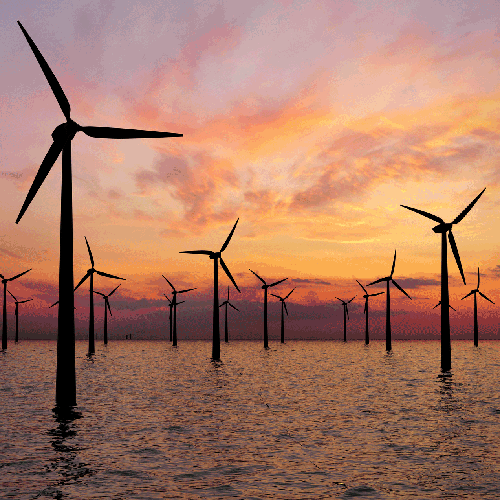
On Thursday, October 12, 2023, Judge Indira Talwani of the U.S. District Court for the District of Massachusetts granted summary judgment in favor of the United States Department of the Interior and Vineyard Wind, and denied summary judgment to the plaintiffs in two cases challenging federal authorizations for the Vineyard Wind project: Seafreeze Shoreside, Inc. v. U.S. Department of Interior (Seafreeze) and Responsible Offshore Development Alliance v. U.S. Department of Interior (RODA). In both cases, the plaintiffs sought to overturn the federal approvals for the construction of the Vineyard Wind project offshore of Massachusetts, which is the first utility-scale commercial offshore wind project in the United States and is currently under construction. The decision results in the dismissal of the last two of four cases seeking to block the Vineyard Wind project, and is a milestone for the nascent offshore wind industry in the United States.
All of the plaintiffs in Seafreeze and RODA are members of the fishing industry. They include three commercial fishing companies and a seafood dealer, each of which asserted that their business would be harmed because fishing would not be possible in Vineyard Wind’s lease area after the turbine array is in place, as well as three associations representing commercial fishing interests, who asserted their members would suffer economic harm from the Vineyard Wind project. These plaintiffs asserted numerous claims under several environmental statutes: the Endangered Species Act (ESA), Clean Water Act (CWA), Marine Mammal Protection Act (MMPA), National Environmental Policy Act (NEPA), and Outer Continental Shelf Lands Act (OCSLA), as well as a challenge to the federal agencies’ decisions under the Administrative Procedure Act (APA). The Court dismissed some of these claims on the basis of standing, and some on the merits.
Standing
The key defect in many of the plaintiffs’ claims was their standing to sue. The federal agency defendants challenged the plaintiffs’ standing to assert NEPA claims, and Vineyard Wind (which intervened in the case as a defendant) challenged the plaintiffs’ standing to assert claims under NEPA, the ESA, and the MMPA. The Court found that each of the plaintiffs had adequately alleged economic injuries because of the asserted harm to their businesses. However, the Court also found that none of the plaintiffs had standing to assert non-economic injuries. While each plaintiff had asserted non-economic injuries—such as harm to the individual fishing captains’ aesthetic and environmental interests in the Vineyard Wind lease area, or to the environmental interests of the industry associations’ members—the Court found that none of the commercial entities could assert those injuries on behalf of their owners or employees.
The Court also ruled that the industry associations lacked standing to assert non-economic claims under NEPA, the ESA, and the MMPA on behalf of their members, and that economic injury was insufficient to provide standing under these three statutes. For the ESA claims—all of which alleged deficiencies with the National Marine Fisheries Service’s (NMFS) consideration of effects on the endangered North Atlantic right whale (Eubalaena glacialis)—the Court held that none of the plaintiffs had demonstrated an injury connected to the Vineyard Wind project’s asserted impacts on the whale or the alleged deficiencies in NMFS’ actions.
As to NEPA and the MMPA, the Court found that the plaintiffs failed to demonstrate that they fell within the “zone of interests” protected by either statute. The Court found that the plaintiffs had not “asserted any cognizable interest in right whales, or any marine mammals for that matter,” and therefore “have not demonstrated any interests that fall within the most generous reading of the zone of interests of the MMPA,” which was adopted by Congress to promote marine mammal conservation. And the Court concluded that plaintiffs who assert purely economic injuries are not within the zone of interests protected by NEPA, which was enacted to promote environmental protection.
Merits
The Court did consider the merits of the plaintiffs’ claims under the CWA and OCSLA, but rejected those as well. The plaintiffs had argued that the Army Corps of Engineers (Corps) violated CWA regulations in issuing a Section 404 permit by failing to analyze less damaging alternatives to the project (specifically, the transmission cable corridor), but the Court found that the Corps’ alternatives analysis complied with the CWA. The plaintiffs also alleged that the Corps failed to consider cumulative impacts from Vineyard Wind and similar future projects, but the Court rejected this argument as well, finding that the Corps’ cumulative impacts analysis was properly limited to the cable corridor that was the subject of its CWA Section 404 permit.
Finally, the Court dismissed the plaintiffs’ OCSLA and APA claims. The plaintiffs asserted several challenges to the Obama Administration’s “Smart from the Start” Initiative, a 2010 policy promoting offshore wind development, but the Court found that each of those challenges was time-barred, as they were asserted more than six years after the Initiative was announced. The plaintiffs also asserted that the Bureau of Ocean Energy Management (BOEM) violated OCSLA by failing to properly consider the 12 factors enumerated in the statute (43 U.S.C. § 1337(p)(4)) when issuing Vineyard Wind’s lease and approving its Construction and Operations Plan (COP). The Court found that the OCSLA challenges to the lease were also time-barred, having been filed more than six years after the lease was issued in 2015. And as to the COP, the Court rejected the plaintiffs’ argument that BOEM was required to ensure that each of the 12 factors in OCSLA were provided for in the approved COP, and instead agreed with the defendants that the Secretary of the Interior is vested with discretion in determining whether the statutory criteria are adequately satisfied. Thus, the Court found that the plaintiffs had failed to show that BOEM’s approval of the COP was arbitrary and capricious, and dismissed the plaintiffs’ claims.
Conclusion
While this decision represents a significant victory for Vineyard Wind, the challenges to the project continue. The plaintiffs in Seafreeze filed a notice of appeal of Judge Talwani’s decision on October 16, and filed a motion before Judge Talwani requesting a stay of the judgment and a temporary injunction against Vineyard Wind’s COP pending appeal on October 18. As has been previously discussed in this blog, the same Court previously granted summary judgment dismissing two other cases challenging the Vineyard Wind project (Nantucket Residents Against Turbines v. U.S. Bureau of Ocean Energy Management, and Melone v. Coit et al, and denied a motion by the Seafreeze plaintiffs seeking an injunction against the project. Each of those decisions has been appealed to the Court of Appeals for the First Circuit, although following the October 12 decision, the Seafreeze plaintiffs voluntarily dismissed their previous appeal as moot.
- Partner
Ed Roggenkamp is a seasoned litigator focused on resolving complex environmental matters. Ed uses his skills as a former professional actor and teacher to help his clients win environmental cases, by explaining complex technical ...
Nossaman’s Endangered Species Law & Policy blog focuses on news, events, and policies affecting endangered species issues in California and throughout the United States. Topics include listing and critical habitat decisions, conservation and recovery planning, inter-agency consultation, and related developments in law, policy, and science. We also inform readers about regulatory and legislative developments, as well as key court decisions.
Stay Connected
 RSS Feed
RSS Feed
Categories
- Alternative Energy
- Bald and Golden Eagle Protection Act
- Budget
- CEQA
- CESA
- Climate Change
- Congress
- Conservation
- Construction Projects
- Consultation
- Continuing Education
- Court Decisions
- Critical Habitat
- Delisting
- Endangered Species Act
- Event
- Fish & Wildlife Service
- Freedom of Information Act
- Government Administration
- Legal
- Legislation
- Listing
- Litigation
- Migratory Bird
- National Marine Fisheries Service
- NEPA
- Off Shore Wind
- Pacific Northwest
- project
- Publications
- Regulatory Reform
- Sacramento-San Joaquin Delta
- SEPA
- Speaking Engagements
- Supreme Court
- Texas
- Timberland
- Water Issues

